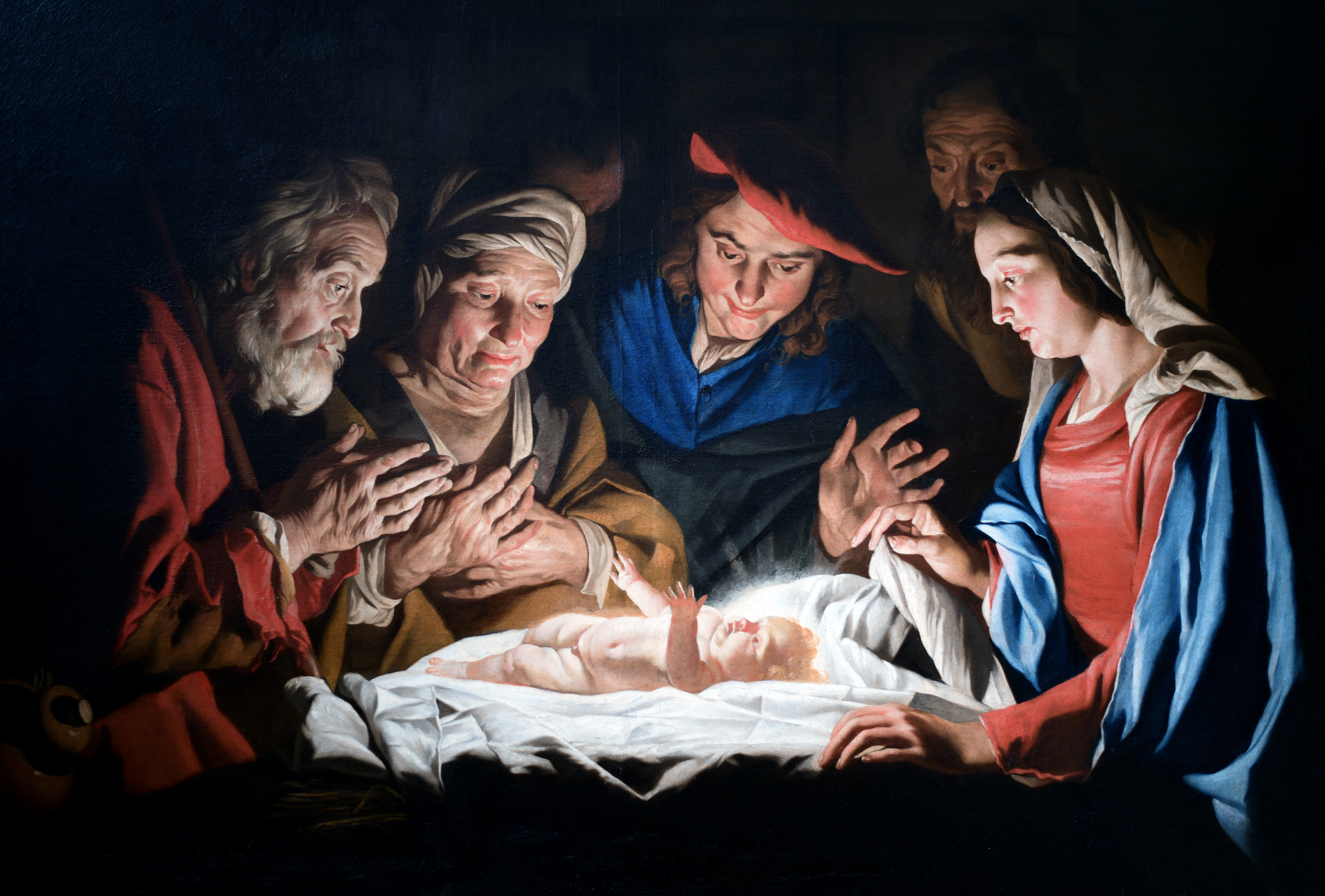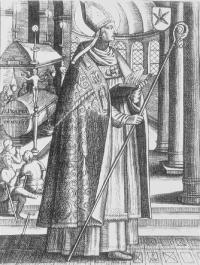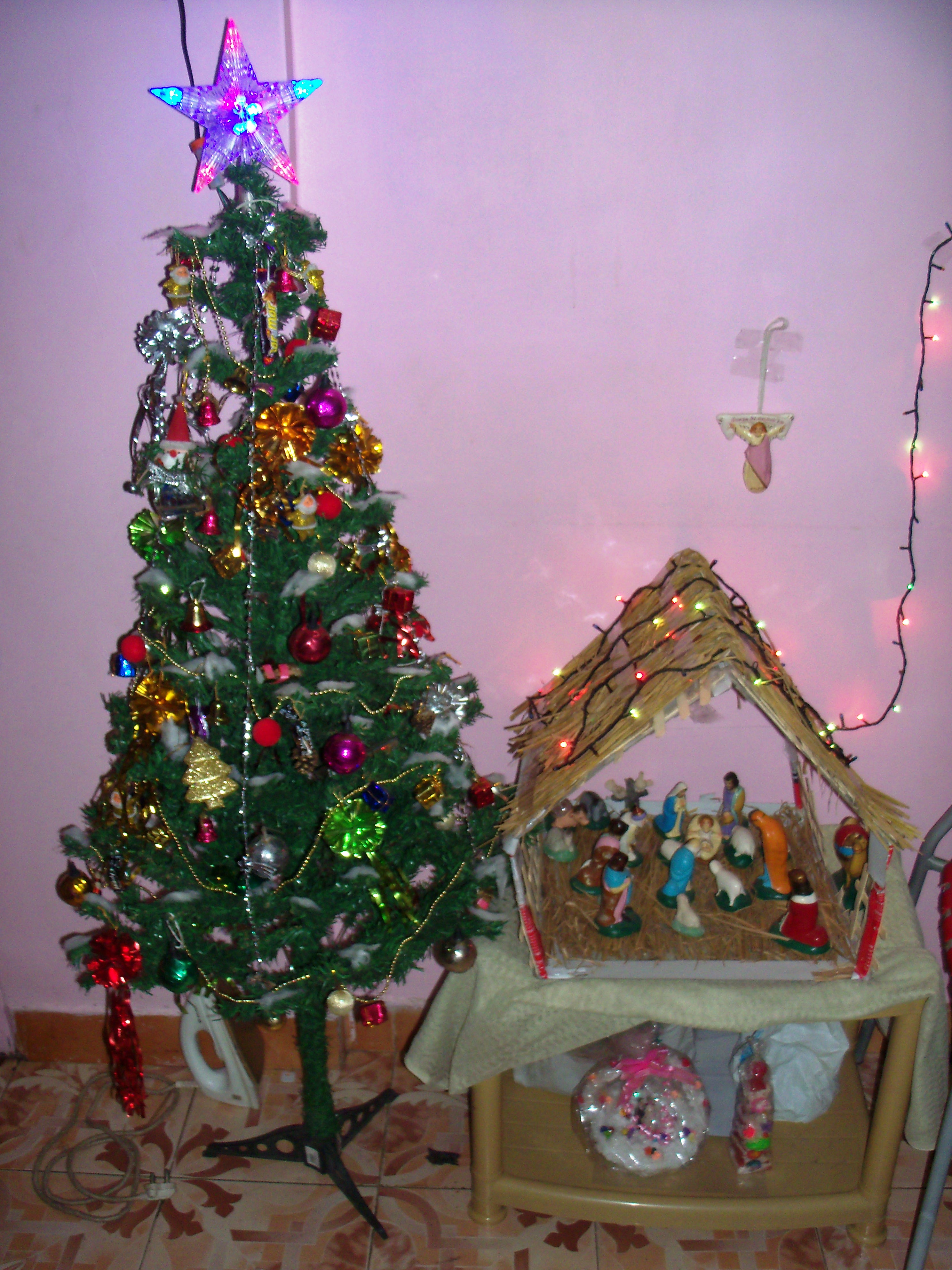|
Christmas Oratorio
The ''Christmas Oratorio'' (German: ''Weihnachtsoratorium''), , is an oratorio by Johann Sebastian Bach intended for performance in church during the Christmas season. It is in six parts, each part a cantata intended for performance on one of the major feast days of the Christmas period. It was written for the Christmas season of 1734 and incorporates music from earlier compositions, including three secular cantatas written during 1733 and 1734 and a largely lost church cantata, BWV 248a. The date is confirmed in Bach's autograph manuscript. The next complete public performance was not until 17 December 1857 by the Sing-Akademie zu Berlin under Eduard Grell. The ''Christmas Oratorio'' is a particularly sophisticated example of parody music. The author of the text is unknown, although a likely collaborator was Christian Friedrich Henrici ( Picander). The work belongs to a group of three oratorios written in 1734 and 1735 for major feasts, the other two works being the ' ... [...More Info...] [...Related Items...] OR: [Wikipedia] [Google] [Baidu] |
BWV 248 Autograph
The (BWV; ; ) is a catalogue of compositions by Johann Sebastian Bach. It was first published in 1950, edited by Wolfgang Schmieder. The catalogue's second edition appeared in 1990. An abbreviated version of that second edition, known as BWV2a, was published in 1998. The catalogue groups compositions by genre. Even within a genre, compositions are not necessarily collated chronologically. For example, BWV 992 was composed many years before BWV 1. BWV numbers were assigned to 1,126 compositions in the 20th century, and more have been added to the catalogue in the 21st century. The Anhang (Anh.; Annex) of the BWV lists over 200 lost, doubtful and spurious compositions. History The first edition of the ''Bach-Werke-Verzeichnis'' was published in 1950. It allocated a unique number to every known composition by Bach. Wolfgang Schmieder, the editor of that catalogue, grouped the compositions by genre, largely following the 19th-century Bach Gesellschaft (BG) edition f ... [...More Info...] [...Related Items...] OR: [Wikipedia] [Google] [Baidu] |
Magi
Magi (; singular magus ; from Latin '' magus'', cf. fa, مغ ) were priests in Zoroastrianism and the earlier religions of the western Iranians. The earliest known use of the word ''magi'' is in the trilingual inscription written by Darius the Great, known as the Behistun Inscription. Old Persian texts, predating the Hellenistic period, refer to a magus as a Zurvanic, and presumably Zoroastrian, priest. Pervasive throughout the Eastern Mediterranean and Western Asia until late antiquity and beyond, ''mágos'' (μάγος) was influenced by (and eventually displaced) Greek '' goēs'' (γόης), the older word for a practitioner of magic, to include astronomy/astrology, alchemy, and other forms of esoteric knowledge. This association was in turn the product of the Hellenistic fascination for Pseudo-Zoroaster, who was perceived by the Greeks to be the Chaldean founder of the Magi and inventor of both astrology and magic, a meaning that still survives in the modern-day ... [...More Info...] [...Related Items...] OR: [Wikipedia] [Google] [Baidu] |
Weimar Cantata (Bach)
Johann Sebastian Bach worked at the ducal court in Weimar from 1708 to 1717. The composition of cantatas for the (court chapel) on a regular monthly basis started with his promotion to ' in March 1714. Church cantatas From 1714 to 1717 Bach was commissioned to compose one church cantata a month. His goal was to compose a complete set of cantatas for the liturgical year within four years. In the course of almost four years there he thus covered most occasions of the liturgical year. The first version of ''Liebster Gott, vergisst du mich'', BWV 1136 (formerly ), a lost cantata the libretto of which was written by Georg Christian Lehms and published in 1711 for the seventh Sunday after Trinity, may have been composed in Weimar. Before 1714 Apart from some Weimar cycle cantatas which may have been composed before they were adopted into that cycle ( BWV 18, 21, 54 and 199): *Lost council election cantatas for Mühlhausen: ** 1709: second council election cantata for Müh ... [...More Info...] [...Related Items...] OR: [Wikipedia] [Google] [Baidu] |
Christmas Cantata
A Christmas cantata or Nativity cantata is a cantata, music for voice or voices in several movements, for Christmas. The importance of the feast inspired many composers to write cantatas for the occasion, some designed to be performed in church services, others for concert or secular celebration. The Christmas story, telling of music of the angels and suggesting music of the shepherds and cradle song, invited musical treatment. The term is called in German, and in French. Christmas cantatas have been written on texts in several other languages, such as Czech, Italian, Romanian, and Spanish. Christmas cantata can also mean the performance of the music. Many choirs have a tradition of an annual Christmas cantata. Theme Different from Christmas oratorios, which present the Christmas story, Christmas cantatas deal with aspects of it. Bach's '' Christmas Oratorio'', written for performance in Leipzig in 1734/1735 touches many of these themes. It consists of six parts, each part is ... [...More Info...] [...Related Items...] OR: [Wikipedia] [Google] [Baidu] |
Leipzig
Leipzig ( , ; Upper Saxon: ) is the most populous city in the German state of Saxony. Leipzig's population of 605,407 inhabitants (1.1 million in the larger urban zone) as of 2021 places the city as Germany's eighth most populous, as well as the second most populous city in the area of the former East Germany after ( East) Berlin. Together with Halle (Saale), the city forms the polycentric Leipzig-Halle Conurbation. Between the two cities (in Schkeuditz) lies Leipzig/Halle Airport. Leipzig is located about southwest of Berlin, in the southernmost part of the North German Plain (known as Leipzig Bay), at the confluence of the White Elster River (progression: ) and two of its tributaries: the Pleiße and the Parthe. The name of the city and those of many of its boroughs are of Slavic origin. Leipzig has been a trade city since at least the time of the Holy Roman Empire. The city sits at the intersection of the Via Regia and the Via Imperii, two important medie ... [...More Info...] [...Related Items...] OR: [Wikipedia] [Google] [Baidu] |
First Sunday Of Christmas
Christmas Sunday is a name for the Sunday after Christmas. In the United Kingdom, if Christmas Day falls on a Saturday, 26 December is sometimes referred to as "Christmas Sunday", and Boxing Day moves to 27 December, although this practice has now fallen out of common usage and 26 December is usually referred to as Boxing Day even when it falls on a Sunday. In Western Christianity, the first Sunday after Christmas is called the "First Sunday of Christmas". Christmas Sunday usually coincides with the "Sunday After the Nativity" feast day that commemorates King David, Saint Joseph (who is called "Joseph the Betrothed"), and James the Brother of the Lord. Special hymns for these saints are found in the Menaion, which are combined with hymns for the Feast of the Nativity, and special Epistle and Gospel readings are chanted at the Divine Liturgy. If there is no Sunday between December 25 and January 1, this feast is moved to December 26, where it is combined with the Synaxis ... [...More Info...] [...Related Items...] OR: [Wikipedia] [Google] [Baidu] |
Visit Of The Magi
The biblical Magi from Middle Persian ''moɣ''(''mard'') from Old Persian ''magu-'' 'Zoroastrian clergyman' ( or ; singular: ), also referred to as the (Three) Wise Men or (Three) Kings, also the Three Magi were distinguished foreigners in the Gospel of Matthew and Christian tradition. They are said to have visited Jesus after his birth, bearing gifts of gold, frankincense and myrrh. They are regular figures in traditional accounts of the nativity celebrations of Christmas and are an important part of Christian tradition. The Gospel of Matthew is the only one of the four canonical gospels to mention the Magi. has it that they came "from the east" to worship the "king of the Jews". The gospel never mentions the number of Magi. Still, most western Christian denominations have traditionally assumed them to have been three in number, based on the statement that they brought three gifts. In Eastern Christianity, especially the Syriac churches, the Magi often number twelve. Their id ... [...More Info...] [...Related Items...] OR: [Wikipedia] [Google] [Baidu] |
Nativity Of Christ
The nativity of Jesus, nativity of Christ, birth of Jesus or birth of Christ is described in the biblical gospels of Luke and Matthew. The two accounts agree that Jesus was born in Bethlehem in Judaea, his mother Mary was engaged to a man named Joseph, who was descended from King David and was not his biological father, and that his birth was caused by divine intervention. Many modern scholars consider the birth narratives unhistorical because they are laced with theology and present two different accounts which cannot be harmonised into a single coherent narrative. But many others view the discussion of historicity as secondary, given that gospels were primarily written as theological documents rather than chronological timelines. The nativity is the basis for the Christian holiday of Christmas, and plays a major role in the Christian liturgical year. Many Christians traditionally display small manger scenes depicting the nativity in their homes, or attend nativity plays ... [...More Info...] [...Related Items...] OR: [Wikipedia] [Google] [Baidu] |
Advent
Advent is a Christian season of preparation for the Nativity of Christ at Christmas. It is the beginning of the liturgical year in Western Christianity. The name was adopted from Latin "coming; arrival", translating Greek ''parousia''. In the New Testament, this is the term used for the Second Coming of Christ. Thus, the season of Advent in the Christian calendar anticipates the "coming of Christ" from three different perspectives: the physical nativity in Bethlehem, the reception of Christ in the heart of the believer, and the eschatological Second Coming. Practices associated with Advent include Advent calendars, lighting an Advent wreath, praying an Advent daily devotional, erecting a Christmas tree or a Chrismon tree, lighting a Christingle, as well as other ways of preparing for Christmas, such as setting up Christmas decorations, a custom that is sometimes done liturgically through a hanging of the greens ceremony. The equivalent of Advent in Eastern Christ ... [...More Info...] [...Related Items...] OR: [Wikipedia] [Google] [Baidu] |
Christmastide
Christmastide is a season of the liturgical year in most Christian churches. In some, Christmastide is identical to Twelvetide. For the Catholic Church, Lutheran Church, Anglican Church and Methodist Church, Christmastide begins on 24 December at sunset or Vespers, which is liturgically the beginning of Christmas Eve. Most of 24 December is thus not part of Christmastide, but of Advent, the season in the Church Year that precedes Christmastide. In many liturgical calendars Christmastide is followed by the closely related season of Epiphanytide at sunset on 5 January, which is known as Twelfth Night. There are several celebrations within Christmastide, including Christmas Day (25 December), St. Stephen's Day (26 December), Childermas (28 December), New Year's Eve (31 December), the Feast of the Circumcision of Christ or the Solemnity of Mary, Mother of God ( 1 January), and the Feast of the Holy Family (date varies). The Twelve Days of Christmas terminate with Epiphany ... [...More Info...] [...Related Items...] OR: [Wikipedia] [Google] [Baidu] |
Liturgical Calendar (Lutheran)
The Lutheran liturgical calendar is a listing which details the primary annual festivals and events that are celebrated liturgically by various Lutheran churches. The calendars of the Evangelical Lutheran Church in America (ELCA) and the Evangelical Lutheran Church in Canada (ELCIC) are from the 1978 ''Lutheran Book of Worship'' and the calendar of the Lutheran Church–Missouri Synod (LCMS) and the Lutheran Church–Canada (LCC) use the ''Lutheran Book of Worship'' and the 1982 '' Lutheran Worship''. Elements unique to the ELCA have been updated from the ''Lutheran Book of Worship'' to reflect changes resulting from the publication of ''Evangelical Lutheran Worship'' in 2006. The elements of the calendar unique to the LCMS have also been updated from ''Lutheran Worship'' and the ''Lutheran Book of Worship'' to reflect the 2006 publication of the ''Lutheran Service Book''. The basic element to the calendar is Sunday, which is a festival of Jesus' resurrection. However, Christia ... [...More Info...] [...Related Items...] OR: [Wikipedia] [Google] [Baidu] |
Leipzig - Thomaskirche
Leipzig ( , ; Upper Saxon: ) is the most populous city in the German state of Saxony. Leipzig's population of 605,407 inhabitants (1.1 million in the larger urban zone) as of 2021 places the city as Germany's eighth most populous, as well as the second most populous city in the area of the former East Germany after ( East) Berlin. Together with Halle (Saale), the city forms the polycentric Leipzig-Halle Conurbation. Between the two cities (in Schkeuditz) lies Leipzig/Halle Airport. Leipzig is located about southwest of Berlin, in the southernmost part of the North German Plain (known as Leipzig Bay), at the confluence of the White Elster River (progression: ) and two of its tributaries: the Pleiße and the Parthe. The name of the city and those of many of its boroughs are of Slavic origin. Leipzig has been a trade city since at least the time of the Holy Roman Empire. The city sits at the intersection of the Via Regia and the Via Imperii, two important medieval ... [...More Info...] [...Related Items...] OR: [Wikipedia] [Google] [Baidu] |
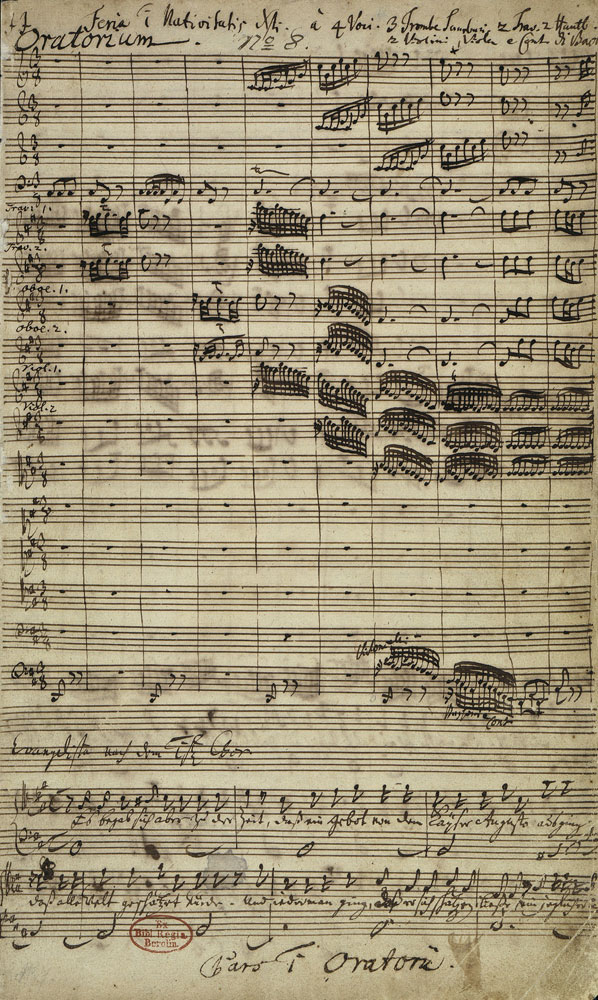

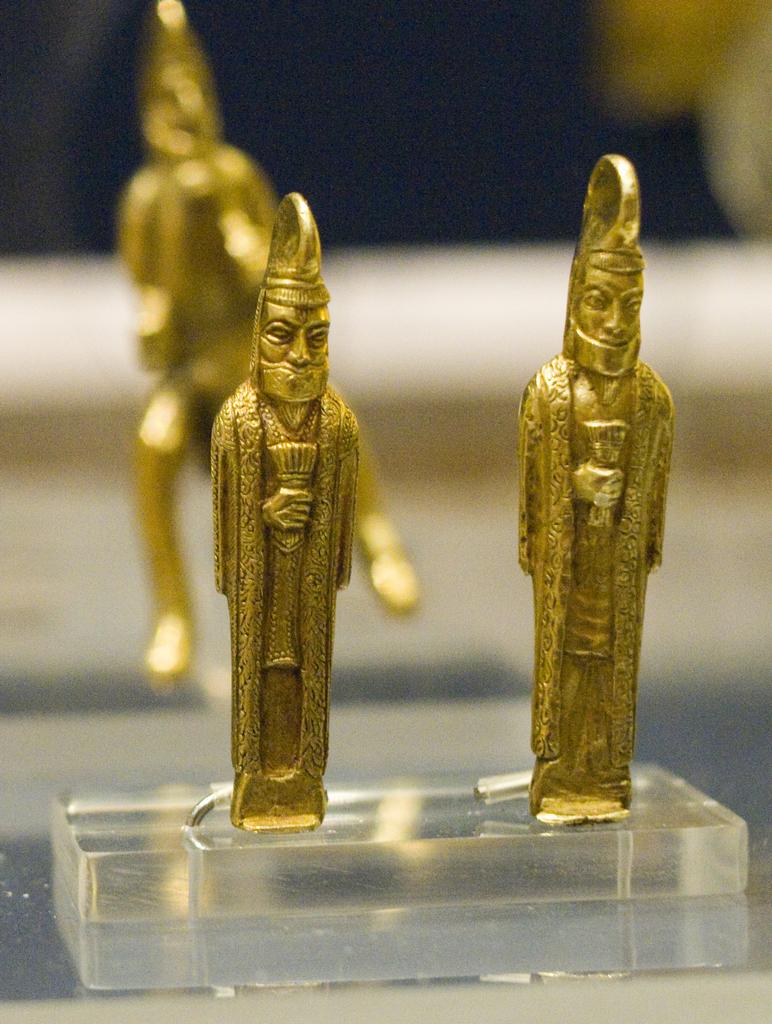

.jpg)
